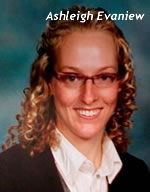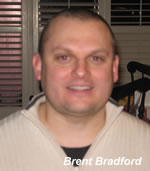STARTING OUT THE SCHOOL YEAR ON A POSITIVE NOTE
written by Ashleigh
Evaniew, Brent Bradford, and Clive
Hickson ,
University of Alberta
As the lush greens of summer fade into the crimson reds and
golden yellows of fall, another school year has started and
our plans for the year have begun in earnest. No matter if
you are a brand new teacher, or an experienced veteran, there
is something undeniably exciting about the very first days
and weeks of a new school year.
In this month's article we will discuss aspects to consider
for the first days and weeks of school which are unique to
teaching physical education. We will examine best practices
to think about as students arrive in our classes, such as
safety and routine. Secondly, we will provide ideas to include
in your activities that are ideal for those first weeks. Finally,
we will conclude with a reflection of the implications of
how a positive early impression can impact students over their
lifetime.
FIRST WEEKS
Safety: As part of our daily or weekly planning,
we should remember to check over our school's physical education
equipment. Let's ask ourselves if any equipment has become
too old or damaged over the years and is in need of replacement.
Also, equipment that may have been lent out over the summer
or stored incorrectly may not be ready to use. Taking a quick,
but thorough, inventory can help prevent unnecessary safety
issues such as injury. Likewise, knowing which types and how
much equipment is available may influence the planning and
organizing of your lessons.
In addition to checking the quality of the equipment, let's
take a moment to survey the location for our lessons. Appraise
the site for possible hazards – especially if we are
using an off-site location for the first time. While it is
difficulty to completely eliminate the possibility of student
injuries altogether, by being proactive and anticipating possible
risk factors we can hopefully decrease the likelihood of such
an event occurring. We think we can all agree that a student
injury is not a preferable way to kick off the first weeks
of the new school year.
Routines: Routines and rules can be defined
as the daily procedures for students that will remain constant
throughout the school year. They can include how students
are to enter the gymnasium, expectations for the change room,
and how students should respond to any specific signals or
commands. Communicating clear expectations to students will
set up a win-win situation for both us and our classes.
For students, they will be well informed of what is expected
from them. For us, well established routines can equate to
more teaching time and less effort spent on management. As
we meet with each of our classes, take a few moments to discuss
with the students the daily routines that would make the physical
education experience more beneficial for them, provide us
with an a learning environment where we have the time to teach,
and maximize the time for students to learn and practice.
Fishburne (2005) suggests limiting the number of class management
rules to five or six, and recommends posting them as a visual
reminder for students. Perhaps, this might be something that
we should consider?
POTENTIAL ACTIVITIES AND IDEAS
Names before Games: Before the morning bell
rings, many new students still experience the nervousness
and excitement of being in a new environment. Therefore, as
new students arrive in our classes, take a moment to remember
what is truly most important, and repeat the phrase names
before games. Before we can establish our routines and launch
the year with new activities, remember it is the students
themselves that are the most important component of our physical
education programs. Let's ask ourselves "do we know all
of our students' names?"
We are sure everyone would agree that being able to address
each student by name allows for more personalized instruction
and meaningful interactions. As the weeks progress, try to
take a moment to use each students' name. Knowing a student's
name can certainly help a student feel as if they belong in
your class.
Learning Activities: Let us now examine
how cooperative activities can be a wonderful option to "kick
start" our year. The very name of cooperative actives
implies the combined cooperative effort required of students.
Cooperative activities are a great way to support and promote
the community feel of a school. In order to be successful,
students need to work together to achieve a common goal. However,
it is critical that students are taught how to be cooperative,
as merely placing students in groups is not sufficient (Hickson,
2004).
Teaching and emphasizing listening and communication skills,
and modeling how groups respect all members, are things to
include in our teaching. As we examine our lesson plans, we
might want to really consider if our chosen activities are
truly cooperative or not. Fishburne (2005) identified six
elements of cooperative games that you can validate
with: fun, cooperation, equality, participation, success,
and trust. So, we should try to keep these elements in mind
as we make our activity choices.
Demonstration: Another teaching note to
consider when we're teaching is the importance of a quality
demonstration. We certainly know that we will all encounter
students with different learning strengths: auditory, verbal,
visual, and kinesthetic. Bandra (1977) discovered much of
how humans learn is though observation. Consequently, as we
provide instructions to students on how to carry out activities,
we should always remember to take the opportunity to model
and demonstrate what we are teaching. A simple visual cue
or two may be all that some students need to better understand
what is expected of them in order to be able to participate
fully and experience greater success in the different activities
we present to them.
POSITIVE IMPRESSION
Role of the teacher: Many of our students
will come to the gymnasium proudly wearing their latest t-shirt
purchase from the mall. We might also! However, as physical
education teachers we need to consider taking the time to
choose an outfit that matches the message we want to deliver
to our students. Certain clothing items may look professional
when we walk down the hallway, but the same clothing may not
be congruent with our role in the gymnasium or out on the
playground or field.
As Bradford and Hickson (2010) found, many non-verbal messages,
such as how teachers dress, can impact student perceptions
of a teacher's effectiveness as a physical education teacher.
So we should take a moment to reflect on the possible other
non-verbal messages we want to present to our students as
they enter the gymnasium. Are we welcoming and open as the
students arrive? Is our demeanor filled with excitement and
enthusiasm? Does our voice resonate with confidence and expertise?
Long range implications: The commonly used
expression "we only get one first impression"
rings true for physical educators. This is our chance to demonstrate
the importance of physical education as a way to establish
and maintain a healthy lifestyle. A high quality physical
education program can promote a long lasting influence on
student health.
For example, a program with considerable weight bearing activities,
such as jumping, can support the growth of strong healthy
bones in children, and as a result of this help prevent the
onset of osteoporosis later in life (Fishburne, Hickson and
Berg, 2005). As teachers we have a responsibility to remember
that we are in a privileged position to shape students' perceptions
and attitudes toward physical education and physical activity.
We encourage you all to reflect on the type of influence
you would like to instill in your students. We all value each
of our students, but often dedicate extra time and effort
into teaching certain students who need that "little
extra" care or attention. For example, that extra attention
to a female student, and teaching the proper technique of
the overhand throw may well result in the student's participation
in a company softball team, 10 or 15 years down the road!
CONCLUSION
In this month's article we focused on ideas to think about
as we begin the first few weeks of the new school year. We
examined best practices to consider during the first weeks
of school, potential activities and ideas, and the long-range
implications of a well thought out start to our physical education
programs.
Let us now reflect on the larger benefits of starting the
year on "the right foot." Just as a well-organized
lesson plan can lead to a productive class for our students,
having a plan for the first few weeks can steer the focus
of our program in the direction we are aiming for. We all
strive to guide our students to become physically educated
individuals. We understand that an efficient instructional
plan can lead to increased instructional time, equating to
more participation for our students and more practice time,
allowing for increased student learning opportunities.
Thanks to the ground work put in during the first weeks,
our students will experience a physical education program
that allows them to increase their movement potential and
develop a positive attitude towards physical education and
the confidence to be active for life!
References
Bandura, A. (1977).
Social learning theory. Englewood Clifs, NJ: Prentice
Hall
Bradford, B. &
Hickson, C. (2010). What we wear: Does it matter?
Poster session presented at: American Alliance for Health,
Physical Education, Recreation and Dance Annual Convention;
2010 March 17 – 20; Indianapolis, IN
Fishburne, G.
(2005) Developmentally appropriate physical education
for children and youth. Ripon Publishing: A Division
of Ripon Consulting Ltd.
Fishburne, G.
J., Hickson, C., & Berg, S. (Summer, 2005). Bone health:
Elementary teachers can help. Physical & Health Education
Journal.
Hickson, C. (2004).
Cooperative activities in elementary school physical education.
International Journal of Learning, 9 (1), 1221-1230.
Biographies:
Ashleigh is a graduate student working towards
a Masters Degree in the area of elementary physical education.
She teaches a curriculum and instruction course at the University
of Alberta as well as early childhood physical education at
an Edmonton Public school. Ashleigh can be contacted at aevaniew@ualberta.ca.
Brent Bradford, a graduate student (PhD)
at the University of Alberta, has worked as a Physical Education
Teacher Educator for the past two years. He was recently selected
as the Faculty of Education’s Graduate Student Teaching
Award recipient. Brent spent nine years teaching and coaching
with Edmonton Catholic Schools in both the elementary and
junior high school environment prior to returning to the University.
Brent can be reached at bdb3@ualberta.ca.
Clive Hickson: A regular pelinks4u
contributor. Please read his biography on the pelinks4u
'contributors'
page.
(back
to pelinks4u homepage) |






